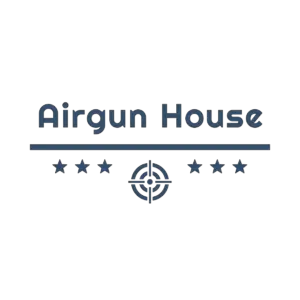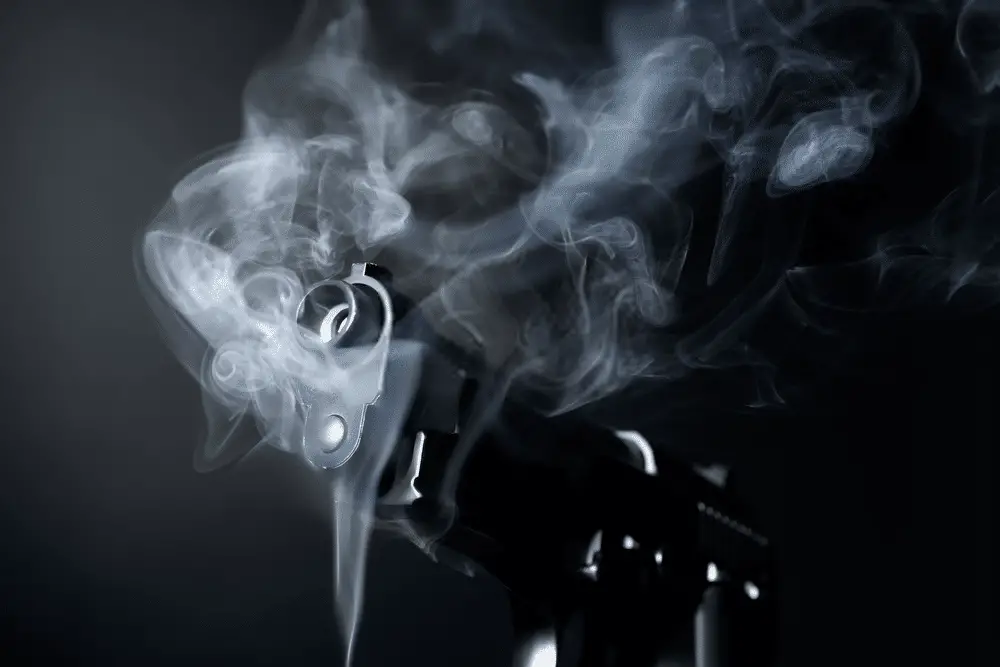I was showing my son one of my Air Rifles recently when he asked why there was smoke coming out of it. He wasn’t complaining, he thought it looked cool. Apparently, it was not dissimilar to how ‘real guns’ look when they’re fired on television. It only happens to one of mine currently so this immediately became his favorite.
Anyway, I thought I would try and educate him on why exactly it does this and as I did I saw his eyes glaze over. It’s funny, my wife’s eyes do this also whenever I bring up the subject of my Air Rifles.
An airgun most likely smokes due to an excess of lubrication or improper lubrication. This is called dieseling. However, it is possible the smoke could also be mistaken for steam that is produced by the compressed air that is heated and cooled quite rapidly. A new gun may experience dieseling for the first hundred shots or so but an older gun should not exhibit this behavior if maintained correctly.
Let’s explore the details further in this article as to why your airgun (or Air Rifle) might smoke.
What is dieseling?
Note that when we talk about dieseling we are talking primarily about Spring-Piston guns here not the pre-charged variety.
Simply put, when a spring-piston airgun is fired it uses a tiny amount of compressed air and it is this that propels the pellet (or ball bearing) out of your barrel. When this air is initially compressed by the internal piston the temperature of this air can rise to over 1000C.
With these high temperatures, it is possible that any small amounts of oil present will reach their flash-point (which is around 250/300C) and will ignite (actually it’s the vapor that ignites). This combustion will be very small but is still significant enough for the smoke that’s produced from it to be visible.
There are a lot of discussions online and countless YouTube videos out there telling you exactly how you can safely increase the power of your airgun by applying a little bit of WD40 (or something similar).
Of course, all these videos are doing is trying to get views so hopefully, this article will give you the answers you need, straight. If you’re wondering why it’s called dieseling, by the way, it’s exactly the same process that’s observed in diesel motor vehicles as opposed to a spark plug in petrol-powered cars.
How is dieseling caused?
Typically, the oil is present due to either incorrect lubrication techniques or excess lubrication. You may also notice this effect in a new gun that has been shipped with excess lubricant within the barrel. It may take a little while for this oil to burn off (typically between 50 and 150 shots) but is no cause for alarm.
Whenever I say ‘no cause for alarm’ it takes me back to the Flash Gordon film where you hear, “..this morning’s unprecedented solar eclipse was ‘no cause for alarm”.
If you’ve never watched Flash Gordon then a) I apologize as this will mean nothing to you and b) watch it, it’s awesome. Anyway, I’ve been told before I must concentrate on the subject in hand so let’s get back on track. Actually, you will find that lubricants that are combustible are not recommended for airguns and you’ve just discovered why!
What problems can it cause?
Although dieseling can look cool it can actually cause serious problems with your gun (and your health if you’re not careful!).
Seal Damage
In the pressure chamber in your spring-piston, the detonation and subsequent temperature increase can destroy your seals and even the metal components over a short amount of time.
So, what exactly happens? Well, if you take the piston-seal then you’ll find this is typically made of a nylon or plastic construction. What do you think happens to plastic when heated? It melts of course!
Put a cigarette lighter under a bit of plastic and you’ll experience the same effect. When your airgun is caused to diesel you will find the seals deteriorate quickly.
Loss of Barrel Integrity
In the barrel of your airgun, it can potentially mess up your rifling. Your Air Rifle was designed for a pellet to travel down that barrel at a certain speed and what you’re doing is forcing it through at much higher velocities. This will increase friction and wear on your barrel.
Also, it has been known for the cheaper variety of pellets to be destroyed whilst still in the barrel due to the extra force behind them. This causes a complete mess inside the barrel as you can imagine! If either happens though you will notice at the least, problems with the efficiency of the airgun and at the worst, a total failure scenario.
Voids Warranty
One final thing, there’s a good chance that you will void any warranty you had if you start doing this deliberately. It’ll be pretty obvious from the condition of the sills and barrel that there’s been prolonged misuse. Also, bear in mind that the oil is very easy to get in but not so easy to get out!
But won’t it make my airgun more powerful?
Well, yes, kind of. But, that doesn’t make it better. In fact, it’s asking for trouble. I’m sure most of us have heard how spraying WD40 into it is loads of fun, will create a bigger bang and make the pellet travel further than normal. I’m sure a lot of us have even done this when they were younger <ahem> before we knew any better.
So, yes it can, at least temporarily, make your airgun more powerful.
I say temporarily because as you now know you’ll soon be left without a seal and will start to do some real damage. If you really must do it, do it on an old gun that isn’t worth anything and you were about to throw it out anyway but my advice is not to bother.
These airguns were designed for strict tolerances for a reason and by exceeding these we’re stressing components to places they shouldn’t be at. Another ‘feature’ you’ll notice after doing this is you’ll lose a lot of consistency in the firing.
Okay, so when should I lubricate my airgun?
The only time you should need to lubricate your airgun would be when your main spring breaks (they do all have a finite life) or when the gun needs a complete overhaul. Typically, both these tasks would be performed by a gunsmith though or at least a professional from the shop you bought it from.
Either way, as you can see there’s no real need for you to apply lubrication outside of these two events. Actually, you will find that the piston in most of the airguns bought these days are made of a material that is synthetic and is actually self-lubricating.
If this thing does need lubricating it wouldn’t be performed by the owner typically. The spring on a spring-piston will break every few thousand rounds and this is quite normal. That’s going to last you a fair few years though, in fact, typically I’ve found that they outlive the gun but then I do like to change my guns and sell my old ones on quite frequently.
The only exception to this rule of not having to lubricate is perhaps for your older guns. Some of these may have piston seals manufactured out of leather and could do with a drop of oil every now and again.
Is there anything else that can cause the smoke?
The simple answer is not really. However, there is something that could be mistaken for smoke. Steam can be generated resulting from the compressed air that is heated and cooled very quickly. To me though, it’s pretty obvious this is steam and doesn’t appear in the same way that smoke does. It dissipates a lot quicker than the smoke and sometimes is barely visible at all.
Conclusion: Why Does My Airgun Smoke?
When buying a second-hand airgun it’s certainly a good thing to look out for. If you see smoke then you may reasonably ask yourself how long has it been doing this for and what has now broke or is about to break?
When considering doing it yourself, reconsider! It’s a really good way to destroy a perfectly good gun in my opinion.
Just keep your gun in good order, change the spring when you need to and if you feel it’s been a very long time since lubrication then wait until a full rebuild is required or perhaps wait until your spring needs replacing.
I know it’s good fun to play around and modify your airguns and that’s fine, anyone who considers themselves an airgunner has either done this themselves or considered it! However, this doesn’t mean you need to add an accelerant.
There are other things you can do to an Air Rifle of course, just search online.
Finally, if your air rifle is louder than you expected, or maybe has become louder over time, then please check out my article here on the subject.
If, after all this, you’d like to see dieseling in action then check out this video – I like ‘Deuce and Guns’, he obviously knows what he’s doing and explains the risks as well.
What the above video doesn’t show you is the smoke coming out of the barrel so if you’d like to see this in action then take a look at the below short video.
Finally, if you have any comments on this subject or have experience of dieseling also – I’d genuinely love to hear from you to get a broader perspective. What do you think about dieseling, any harm or just a bit of fun?
Thanks for reading, stay safe and most importantly, have fun!


